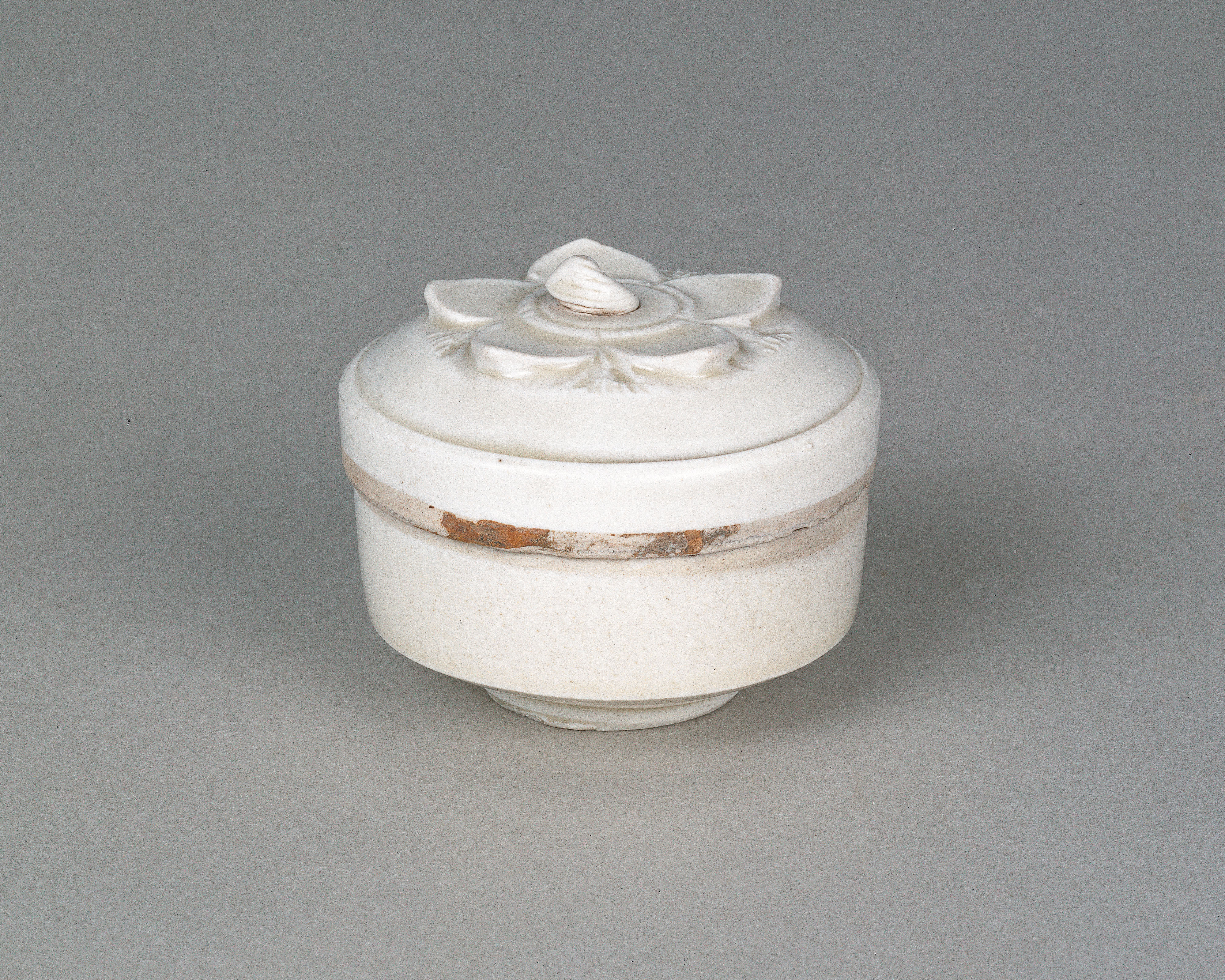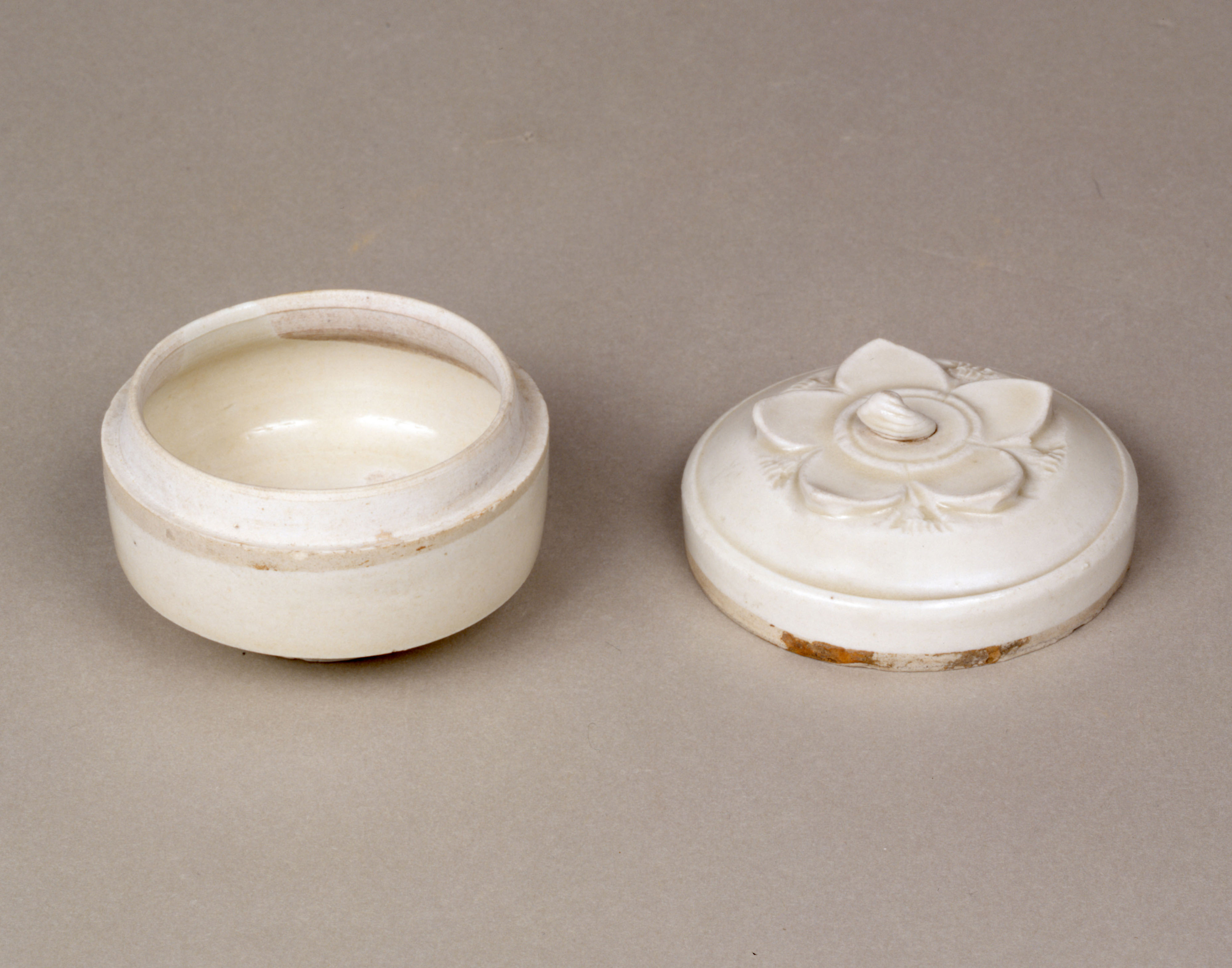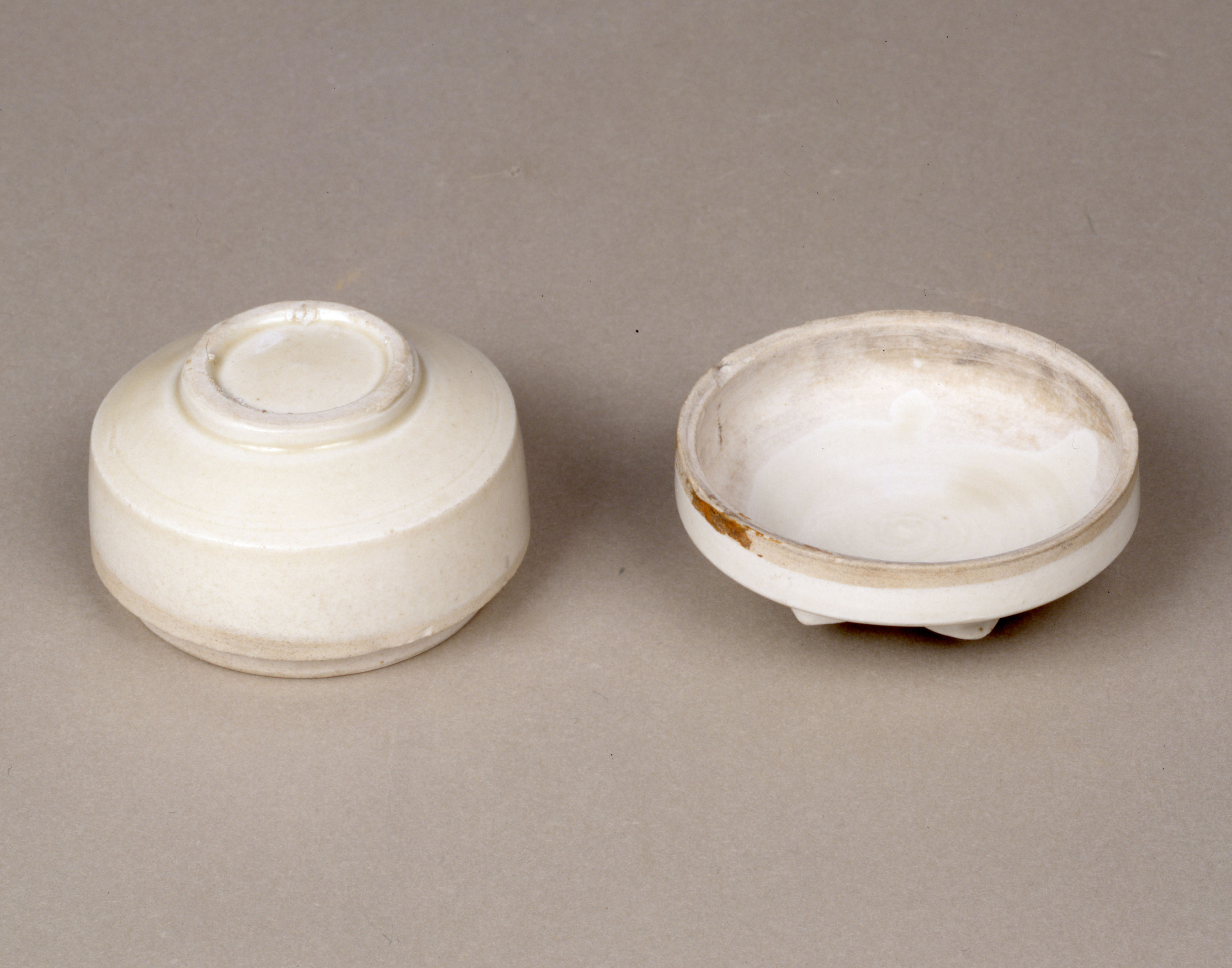
はくじごうす 白磁合子
11~12世紀(北宋)
中国河北省の定窯(ていよう)で作られた合子(ごうす)です。合子とは蓋付きの容器を指します。
白磁は、カオリンという原料を用いて焼き上げた純白のやきものです。諸説あるものの中国においては6世紀後半頃に白磁が作られ始めたとされています。本格的な白磁の生産は、唐時代(618年~907年)後期に始まり、北宋時代(960年~1127年)になると、定窯が白磁生産の中心地となります。定窯は後世、宋時代の五大名窯の一つにも数えられました。
蓋部分には花弁状の装飾があしらわれ、小ぶりながら無駄のない整った造形をしています。均一に焼きあがった純白の肌は、中国陶磁史上における白磁の完成形のひとつと言えます。
| 寸法 | 最大径8.0cm |
|---|---|
| 制作地 | 生産地域:中国/生産窯:河北省定窯 |
| 寄贈者名 | 浦上敏朗 |

Covered box, hakuji (white porcelain)
11~12th century
This is a covered box created at one of the Ding kilns in the prefecture of Dingzhou in Hebei, in northern China. In Japanese, it is called Gosu and refers to a container with a lid.
Hakuji (white porcelain) is fired using kaolin, a fine white clay, as the basic material. Opinions are widely divided concerning the origin of hakuji. It is said that the production of hakuji began in China, around the latter half of the 6th century. The full-fledged production of hakuji items started in the latter part of the Tang dynasty (618 – 907). In the Northern Song dynasty (960 – 1127), the Ding kilns site became a central area for the production of hakuji. In later ages, the Ding kilns were counted among the Five Potteries of the Song dynasty.
The cover of this piece is decorated with an abstract flower with petals. Small in size, this covered box has a simple, well-balanced and economical form. The pure whiteness of its uniformly fired texture exhibits the highest degree of perfection attained by hakuji in China’s outstanding porcelain history.
| Donor Name | Uragami Toshiro |
|---|

白瓷合子
這是在中國河北省定窯產的合子。合子是指帶蓋子的容器。
所謂白瓷,是指用叫高嶺土的原料燒製而成的純白陶瓷器。在中國有多種說法,一般認為是在6世紀後半期開始製造白瓷的。真正的白瓷生產始於唐朝後期(618年—907年),到了北宋時期(960年—1127年),定窯成為白瓷生產的中心。定窯被後世列為宋代五大名窯之一。
蓋子上有花瓣狀的裝飾物,碗很小但形狀精巧。 燒製均勻的純白表麵,是中國陶瓷史上完整的白瓷範例之一。
| 捐贈者 | 浦上敏朗 |
|---|

백자합자
중국 허베이성 정요에서 만들어진 합자입니다. 합자란 뚜껑이 있는 용기를 말합니다. 백자는 카오린이라고 하는 원료를 사용해서 구워낸 순백의 도자기인데, 그 시작에는 여러가지 설이 있지만, 중국에서는 6세기 후반 즈음에 백자가 만들어지기 시작했다고 합니다. 본격적인 백자 생산은 당나라 시대(618년~908년)후기에 시작되었고, 북송 시대(960년~1127년)가 되자, 정요가 백자 생산의 중심지가 됩니다. 정요는 후세, 송 시대의 5대 명요 중 하나로 꼽히게 됩니다.
뚜껑 부분에는 꽃 모양 장식이 되어 있는데, 작으면서도 군더더기 없이 정돈된 모양을 하고 있습니다. 균일하게 잘 구워진 순백색의 표면은 중국 도자기 사상 백자의 완성형 중 하나라 일컬을 수 있을 정도로 완벽한 모습을 하고 있습니다.
| 기증자명 | 우라가미 토시로 |
|---|


